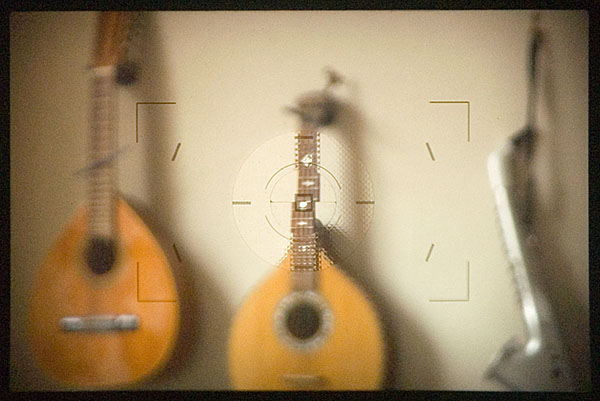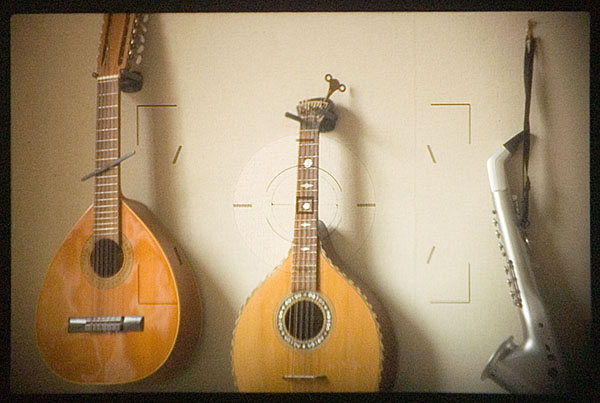Lax Jought
Well-known
I love photography, and at the moment my main carry-everywhere camera is the Leica M8.2 with a 35mm Voigtlander lens on it. With the 1.33x crop of the M8 that comes to about 47mm which was what I was going for.
But I also sometimes carry with me a compact LX5 and a Canon 7D to do the kind of things that the Leica cannot do. The LX5 I use for absolutely silent shots and macro shots which it seems to do well enough, and the 7D for the extreme telephoto lens on it. I could use the 7D for macro shots too I suppose but then I'd have to change lenses.
Everything else, I'm more than happy to stick with the Leica.
However, sometimes I don't want to be carrying 2 cameras around (the Leica with at least one of the other cameras). As much as I love my Leica, I do wish for one camera that can do it all.
So... does this camera exist:
1) It must have a rangefinder focusing system. I say this is crucial for me because many of my photos are taken in ultra or extreme low-light conditions. I took my Canon DSLR 7D out with my Leica in the dark of the night, and the 7D failed miserably, whereas my Leica came through for me. This is because with the Leica, I could see through the viewfinder and find the tiniest and barest visual focusing point even if it is the tiniest microscopic sliver of light on the edge of an object, and use that as a point of reference to gauge focus overall. With the DSLR, I couldn't even see anything through the viewfinder to find a focus point because it's way too dark and everything is out of focus to begin with it's so it's impossible to find focus.
2) It must have manual focus, for the reasons stated above. My LX5 and 7D could not find focus at all in the dark conditions. I really needed my eye to find it myself.
3) It must have at least APS-C or larger sensor size, I really enjoy having a shallow DoF option and the image quality that comes with larger sensors.
4) And macro...
5) Video recording at 1080p full HD at 24/25p.
Is this asking for too much? Zoom is not essential, I'm happy to stay put at 50mm or its crop equivalent, ie. interchangeable would be great but if it was fixed at 50mm-ish, I wouldn't mind at all.
But I also sometimes carry with me a compact LX5 and a Canon 7D to do the kind of things that the Leica cannot do. The LX5 I use for absolutely silent shots and macro shots which it seems to do well enough, and the 7D for the extreme telephoto lens on it. I could use the 7D for macro shots too I suppose but then I'd have to change lenses.
Everything else, I'm more than happy to stick with the Leica.
However, sometimes I don't want to be carrying 2 cameras around (the Leica with at least one of the other cameras). As much as I love my Leica, I do wish for one camera that can do it all.
So... does this camera exist:
1) It must have a rangefinder focusing system. I say this is crucial for me because many of my photos are taken in ultra or extreme low-light conditions. I took my Canon DSLR 7D out with my Leica in the dark of the night, and the 7D failed miserably, whereas my Leica came through for me. This is because with the Leica, I could see through the viewfinder and find the tiniest and barest visual focusing point even if it is the tiniest microscopic sliver of light on the edge of an object, and use that as a point of reference to gauge focus overall. With the DSLR, I couldn't even see anything through the viewfinder to find a focus point because it's way too dark and everything is out of focus to begin with it's so it's impossible to find focus.
2) It must have manual focus, for the reasons stated above. My LX5 and 7D could not find focus at all in the dark conditions. I really needed my eye to find it myself.
3) It must have at least APS-C or larger sensor size, I really enjoy having a shallow DoF option and the image quality that comes with larger sensors.
4) And macro...
5) Video recording at 1080p full HD at 24/25p.
Is this asking for too much? Zoom is not essential, I'm happy to stay put at 50mm or its crop equivalent, ie. interchangeable would be great but if it was fixed at 50mm-ish, I wouldn't mind at all.



